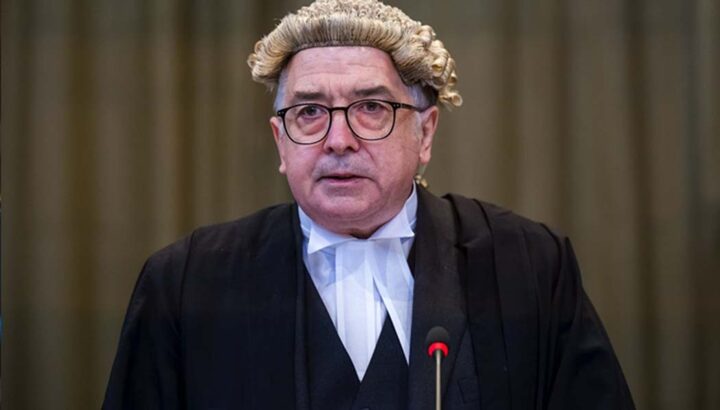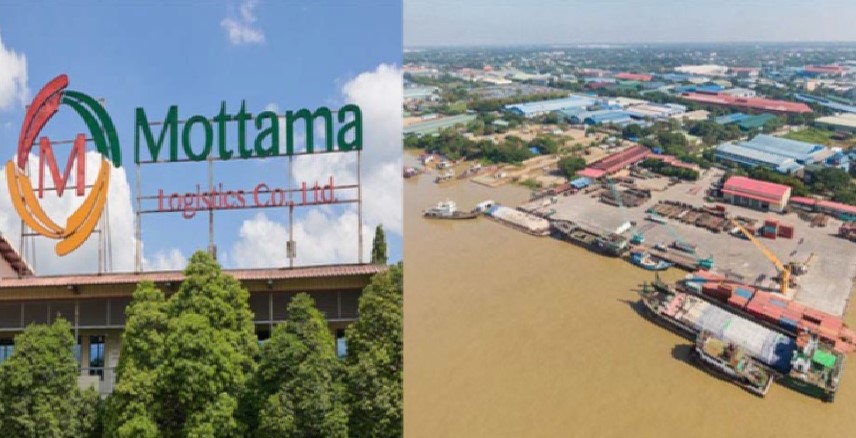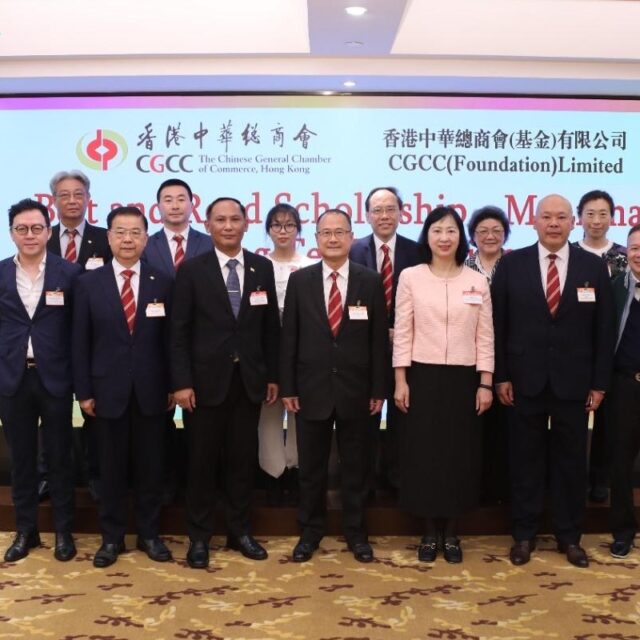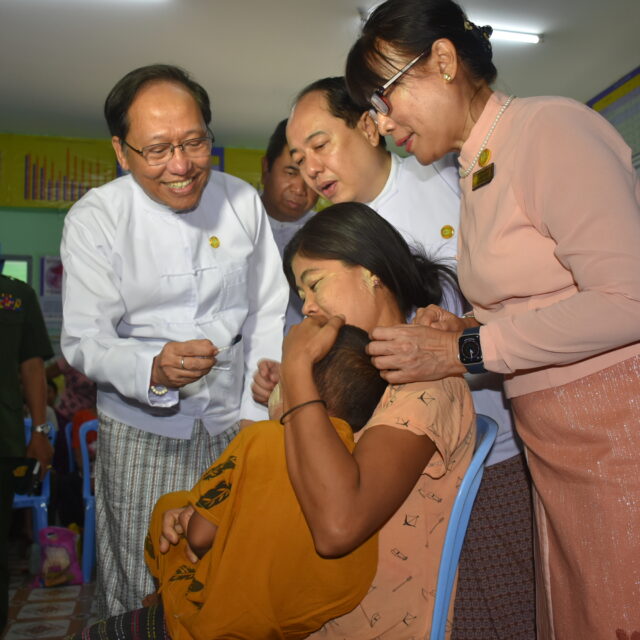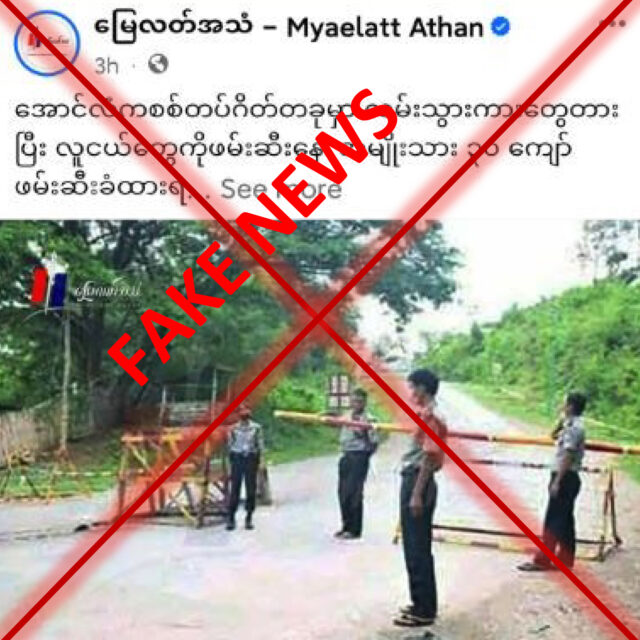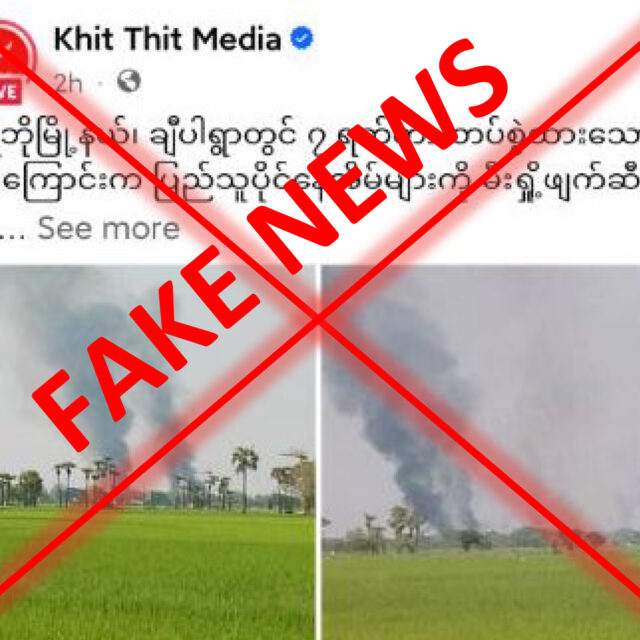Madam President, Mr Vice-President, Members of the Court,
1. Myanmar’s fourth preliminary objection is that the Court lacks jurisdiction, or that the application is inadmissible, as there was no dispute between The Gambia and Myanmar when the application instituting proceedings was submitted.
2. It is of course well established that the Court cannot exercise its contentious jurisdiction unless the dispute already existed between the parties before proceedings were instituted.1
3. The Gambia accepts that this requirement applies in this case, like any other.2
4. The Gambia has also not disputed that the burden is on the applicant to establish the existence of the prior dispute.3
5. The issue for your decision is thus whether The Gambia has discharged that burden in this case. Myanmar says it has not.
6. In explaining why, I will deal first with the requirements that must be met for a prior dispute to exist. I will then address the circumstances of this case.
The legal requirements
Madam President, Members of the Court,
7. I turn, then, first to the requirements.
8. At the outset, a point of agreement is noted. Both parties accept that the existence of a prior dispute is a question of substance, not of form or procedure.4
9. This means that no specific formalities need be observed for a dispute to exist.5 But this conversely also means that no specific formalities will necessarily suffice.6 All will depend on the particular circumstances of the individual case, viewed objectively.
10. These circumstances must, however, satisfy four requirements.
11. The first is that the prior dispute must be the same dispute between the same parties as that submitted in the application instituting proceedings.7
12. The second is that the prior dispute must be a legal dispute.8 Obviously, the Court can only decide legal disputes.9 If the prior dispute must be the same dispute as that contained in the application, then it too must be a legal dispute. This means, for instance, that prior exchanges of a political nature would not suffice.
13. These first two requirements are the very essence of the prior dispute requirement. The Gambia has not expressly challenged their existence. It does, however, dispute the next two requirements.
14. The third requirement is that both parties must have been aware of each other’s position.10
15. It is self-evident that if two parties hold contradictory opinions, but neither knows of the other’s view, there is no dispute between them. A dispute arises only when their views are made known to each other.11 As Judge Owada has said, “it is the ‘objective awareness’ of the parties that transforms a disagreement into a legal dispute”.12 In the Right of Passage case, the Court thus asked whether events had led the parties to “adopt clearly-defined legal positions as against each other”.13
16. The Gambia claims that this third requirement would allow a respondent, simply by remaining silent, to prevent the applicant from knowing the respondent’s position, thereby preventing a dispute from existing and precluding litigation before the Court.14
17. That is not the effect of this third requirement. If the applicant has made a legal claim that calls for a response, and any reasonable time to respond has passed, then the applicant may well be aware of the respondent’s position from its silence.15 However, one way or the other, each party must be aware of the opposing view of the other.
18. Contrary to what The Gambia seems to suggest,16 the Court has never said otherwise. In the Marshall Islands cases, the Court, having found that the respondent was not aware of the applicant’s position, did not need to go on to decide whether the applicant had awareness of the respondent’s position. However, the Court said that a dispute might be inferred from a respondent’s silence,17 thus affirming that the applicant does also have to be aware, from the respondent’s silence or otherwise, of the latter’s position.
19. If this third requirement did not exist, the effect would be this. The applicant could present a claim to the respondent in a note verbale, and then institute proceedings an hour later. The prior dispute requirement would be met because just prior to the application, the respondent would have known of the applicant’s claim, and the applicant would not need to know the respondent’s position.
20. If that was correct, the prior dispute requirement would be a pure formality. What purpose would it serve? It serves no purpose unless it allows both parties to articulate their legal positions to each other before a case is brought.18 The judicial settlement of international disputes is an alternative to the direct and friendly settlement of disputes between the parties.19 Obviously, friendly settlement is only possible once each party is aware of the other’s position, and until they are, there can be no dispute in respect of which a friendly settlement could be reached. The Court could be burdened with many unnecessary cases if judicial proceedings could be brought before there is even a dispute capable of friendly settlement.
21. I move on, then, to the fourth requirement, which is this. The parties’ prior legal positions must have been articulated with a minimum degree of particularity.20
22. The need for this requirement is illustrated by this hypothetical example.
23. Suppose that State A said to State B: “you are in breach of international law”. Suppose it is unclear from the statement or its context what conduct of State B is referred to, or what rule of international law is said to be breached. Suppose State B responds simply that it is unaware of any breach of international law on its part. Suppose State A then brings proceedings against State B before this Court, and its application now specifies the impugned conduct of State B and the norms of international law said to be violated. Can it be said in this example that the prior dispute requirement is satisfied?
24. The answer must be no. In this example, there was, in form, a prior allegation by State A of a breach of international law, which State B did not accept. But there was no prior dispute in substance. It cannot be shown that the prior statement of State A was referring to the same matter as that submitted to the Court in the application. Indeed, the prior statement of State A was so lacking in particularity that it could not be known what legal claim it was making, or whether it was even making a legal claim at all, rather than a political statement. If State B could not know what claim State A was making, then State B’s response could hardly be a positive opposition to any claim.21
25. Contrary to what The Gambia suggests, Myanmar does not contend that the applicant must “fully develop its factual and legal claims … before it seizes the Court”.22 Rather, it is only a minimum degree of particularity that is required.
26. What is this minimum degree? Essentially, the positions of the parties have to be stated with enough particularity to make it possible to determine that the first three requirements I have referred to are satisfied. In cases where the dispute is said to be manifested by the respondent’s silence to a claim made by the applicant, then of course it is the applicant’s claim that must be examined. Is it stated with sufficient particularity to establish that it is indeed a legal claim rather than, say, a political statement? And to establish that it has the same subject matter as the application subsequently submitted to the Court? And to enable the respondent meaningfully to respond to it, so that it can be established whether a response is a positive opposition to the particular claim made?23
27. The required degree of particularity must also be a question of substance, and not of form. This too may vary according to the circumstances of the case.
28. Greater particularity may be required, for instance, if a party relies on its statements made in multilateral fora.24 Thus, in the Marshall Islands cases, the Court found that no dispute could be inferred from a statement made by the applicant in a multilateral setting, given that statement’s “very general content and the context in which it was made”.25
29. Even greater care may be needed if reliance is placed, not on a party’s statements in multilateral fora, but on its voting record on resolutions. The Court has noted that a State’s vote on a resolution is not of itself indicative of its position on every proposition in the resolution, let alone of the existence of a legal dispute between it and a particular other State.26
30. Myanmar’s written pleadings thus give examples of General Assembly resolutions which state in general language that there have been “violations and abuses of human rights” in a particular State, and which call upon that State “to end immediately … all violations of international law”.27 Resolutions such as these, as a matter of form, specifically allege violations of international law by a particular State. However, in substance, they are insufficiently precise to establish that a specific legal claim is being made by any given State voting in favour of the resolution against the State that is the subject of the resolution. The latter’s silence in the face of such a resolution would not mean that there is a legal dispute between it and every State voting for the resolution.
31. Another context where greater particularity is needed is the case of statements by a State that itself is not specially affected by breaches of international law referred to in its statement. A State that is not itself specially affected may well express a view that a State that is involved in the situation has breached norms of international law, including norms of an erga omnes or erga omnes partes character. But in the absence of a sufficiently clearly expressed intention, it cannot be assumed that the non-specially affected State is thereby asserting a specific legal claim of its own, much less assumed what that legal claim might be.28 To demonstrate this point, the written pleadings give further examples of a motion of the Canadian House of Commons and a statement of the Canadian Minister for Foreign Affairs.29 Like the General Assembly resolutions I have referred to, these are political statements, not legal claims.30
32. In short, this fourth requirement is inherently necessary and is reflected in existing jurisprudence.
The circumstances of this case
Madam President, Members of the Court,
33. I turn, then, to the circumstances of this case.
34. The focus, in this case, is on a note verbale sent by The Gambia to Myanmar on 11 October 2019, and Myanmar’s lack of response thereto.
35. The Gambia also relies on various other prior resolutions, statements and silences preceding this note verbale, but these other matters are addressed comprehensively in the written pleadings,31 and I need only deal with them briefly today. None of these other matters, singly or collectively, could conceivably establish the existence of a dispute between The Gambia and Myanmar concerning alleged breaches of the Genocide Convention.
36. First, The Gambia relies on certain declarations and resolutions of the OIC.32 None of these are statements by The Gambia, much fewer statements of the Executive government of The Gambia. None of them clearly alleges that Myanmar bears State responsibility for a breach of the Genocide Convention.33 Indeed, the last of these OIC documents, adopted by the OIC’s supreme organ in May 2019, calls for a case to be brought before this Court on behalf of the OIC, yet contains no reference to genocide at all. While we now know that the OIC Committee envisaged as early as February 2019 that this case would be brought under the Genocide Convention, this was not known to Myanmar at the time and was not apparent from a reading of these OIC documents.
37. Secondly, The Gambia relies on reports of the United Nations Fact-finding Mission, the “FFM”. 34 These FFM reports are not statements by The Gambia, and there is nothing to suggest that the FFM was authorized to speak on behalf of The Gambia or was purporting to do so.
38. Thirdly, The Gambia relies on two statements made by The Gambia at the General Assembly,35 neither of which contains any reference to the Genocide Convention and neither of which is addressed to Myanmar.
39. Fourthly, The Gambia relies on silences by Myanmar in the face of an OIC resolution and the FFM reports.36 Obviously, if the resolution and reports did not amount to legal claims by The Gambia vis-à-vis Myanmar, then Myanmar’s silence was no positive opposition to any such claims.
40. Finally, The Gambia relies on three statements of Myanmar,37 none of which mentions the Genocide Convention.
41. None of these earlier matters establishes a dispute. We are thus left with the October 2019 note verbale, which is found in volume IV of the preliminary objections, at Annex 121, page 850.
42. I ask the Court to look at this two-page document. Its brevity and vagueness are striking.
43. What facts does it refer to? None at all. It refers generally to “the findings of the UN [FFM]”, but does not say what those finding are. It quotes an OIC resolution referring to “the practice of genocide against Rohingya Muslims”, again without specifying any facts.
44. In the note verbale, The Gambia claims no knowledge of its own of the facts. It refers merely to FFM reports, saying The Gambia is “deeply troubled” by these. It finds the FFM reports to be “well supported by the evidence and highly credible”, but with no suggestion that The Gambia had access to, or could itself evaluate the FFM’s evidence.
45. It refers generally to “related resolutions” of the OIC without specifying which resolutions, apart from one that it quotes.
46. It refers to Myanmar’s “denial”, without specifying the statements said to constitute such denials.
47. As to norms of international law, it refers generally to “the Genocide Convention and customary international law”, or to “International Law and Human Rights covenants”. It does not specify which conventions it refers to other than the Genocide Convention, or which norms of customary international law, or which provisions of the Genocide Convention.
48. Ultimately, there is not even any positive allegation of The Gambia’s own that Myanmar is in breach of international law. Having referred to the FFM reports and OIC resolutions, the final paragraph says simply that The Gambia “understands” Myanmar to be in breach of international law. That final paragraph then ends with a hortatory call for Myanmar to comply with its obligations, reflecting a similar call in an OIC resolution that it quotes.
49. In short, the language of this document is similar to that in the General Assembly resolutions, or the motion of the Canadian House of Commons and statement of the Canadian Foreign Minister, which I have given as examples of documents that are not legal claims.
50. Having considered its terms, I then ask the Court to consider the context in which the note verbale was sent.
51. At the time it was sent, eight months had elapsed since the OIC Committee proposed bringing this case.38
52. At the time it was sent, seven and four months had elapsed respectively since the OIC Council of Foreign Ministers and Islamic Summit had resolved that this case should be brought on behalf of the OIC.
53. Three months had already elapsed since The Gambia agreed to be the applicant State.
54. Two weeks had elapsed since The Gambia had announced to the General Assembly that it would “lead concerted efforts” to bring this Court case on behalf of the OIC.
55. And a week had already passed since The Gambia instructed its legal representatives for this case.
56. This was not a case where there was first a dispute between the parties, followed by a decision of one of them to submit that dispute to the Court. What happened here was the reverse. First, a decision was taken to bring this case before the Court. Only months later did The Gambia then take steps to generate the necessary dispute. At the time it was decided to bring this case, the purpose for doing so was not to settle a dispute, as there was at the time no dispute. The decision to bring the case was therefore not for the purpose for which the Court’s contentious jurisdiction is made available to States, namely dispute settlement. For that reason alone, the application must be inadmissible.
57. Three further points about the circumstances should be noted.
58. First, there were no prior bilateral dealings between the parties against which the note verbale could be read and understood. The Gambia had been engaging for months with the OIC and its other Member States on preparations for this case, but not with Myanmar. For Myanmar, these were The Gambia’s opening words on the matter.39
59. Secondly, if the note verbale had wanted to make a specific legal claim on behalf of The Gambia against Myanmar, it could easily have done so. At the time it was sent, months had passed since the decision to bring this case, and The Gambia’s legal representatives had already been appointed. Shortly after it was sent, The Gambia submitted its application instituting proceedings, which does identify specific acts and specific provisions of the Genocide Convention said to be breached. It seems it was a conscious choice to send so brief a note verbale.
60. Thirdly, the note verbale contains no reference to the intention to bring this Court case. There may well be no general requirement for an applicant to give advance notice of such intention to a respondent, but given that here the intention had existed for months, the failure to mention it is striking. This suggests, if anything, that the note verbale is not yet making a specific legal claim by The Gambia.
61. Given the wording and circumstances of this document, should Myanmar at the time have understood it as making a specific legal claim calling for a response? It was a two-page note from a State not specially affected and not directly involved in the events, and which had not previously engaged with Myanmar in relation to the matter. It specified no facts and was vague and general about the legal norms said to be violated. It contained no reference to potential Court proceedings, or to The Gambia’s role in the OIC initiative. It merely referred to what was stated in FFM reports and OIC resolutions and called upon Myanmar in a general way to comply with its legal obligations.
62. No specific legal claim was made that Myanmar could meaningfully take a position on. This was not a document that called for a response. Indeed, the note verbale itself does not even request a response or imply that one was expected.
63. Furthermore, even if a response was called for, quod non, it cannot be said that a response was called for within a month. It had taken 8 months from the OIC Committee proposal for The Gambia to send these 2 pages. How can Myanmar reasonably have been required to respond to such broad and unparticularized claims within one month, especially when The Gambia indicated no timeframe for an expected response?
64. The inference can be drawn that The Gambia expected no response. At the time the note verbale was sent, The Gambia presumably already knew that it would submit its application exactly a month later, on 11 November 2019. The intention from the outset was presumably that the note verbale, containing references to breaches by Myanmar of international law, and the expected lack of any response to it within a month, would, in form, establish the existence of the necessary dispute.
65. However, there was no dispute in substance, and that is what is required. The note verbale was so general and lacking in specificity that it is not possible to determine that it was making any legal claim at all, or if so, exactly what legal claim. It identified no facts and made unspecified references to human rights covenants and customary international law. It is impossible to determine whether its wording had in mind all of the matters subsequently included in the application. It could have expressly stated that The Gambia was making a legal claim against Myanmar, but it did not.40 It did not call for a response, but even if it did, it did not call for a response within a month. Therefore, even if it did advance a legal claim, quod non, no positive opposition can be inferred from Myanmar’s failure to respond to it by 11 November 2019.
66. For these reasons, the requirement of a prior dispute is not met.
Madam President, Members of the Court,
67. This concludes my presentation on the fourth preliminary objection and brings to an end Myanmar’s first round of oral arguments. I thank you for your kind attention.

